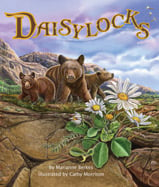Alignment to Standards for WA

| Grade | Number | Standard |
|---|---|---|
| 2,3 | 2-3 LS1A | Plants have life cycles that include sprouting, growing to full size, forming fruits and flowers, shedding seeds (which begins a new cycle), and eventually dying. The details of the life cycle are different for different plants. |
| 2,3 | 2-3 LS2A | Ecosystems support all life on the planet, including human life, by providing food, fresh water, and breathable air. |
| 4,5 | 4-5 LS2A | An ecosystem includes all of the populations of living organisms and nonliving physical factors in a given area. Living organisms depend on one another and the nonliving physical factors in their ecosystem to help them survive. |
| K,1 | K-1 ES2B | Earth materials include solid rocks, sand, soil, and water. These materials have different observable physical properties. |
| K,1 | K-1 ES2C | Some Earth objects are made of more than one material. |
| K,1 | K-1 LS1F | Most plants have roots to get water and leaves to gather sunlight. |
| K,1 | K-1 LS2A | There are different kinds of natural areas, or habitats, where many different plants and animals live together. |
| K,1 | K-1 LS2B | A habitat supports the growth of many different plants and animals by meeting their basic needs of food, water, and shelter. |
| K,1 | K-1 LS3B | There are many different types of living things on Earth. Many of them are classified as plants or animals. |